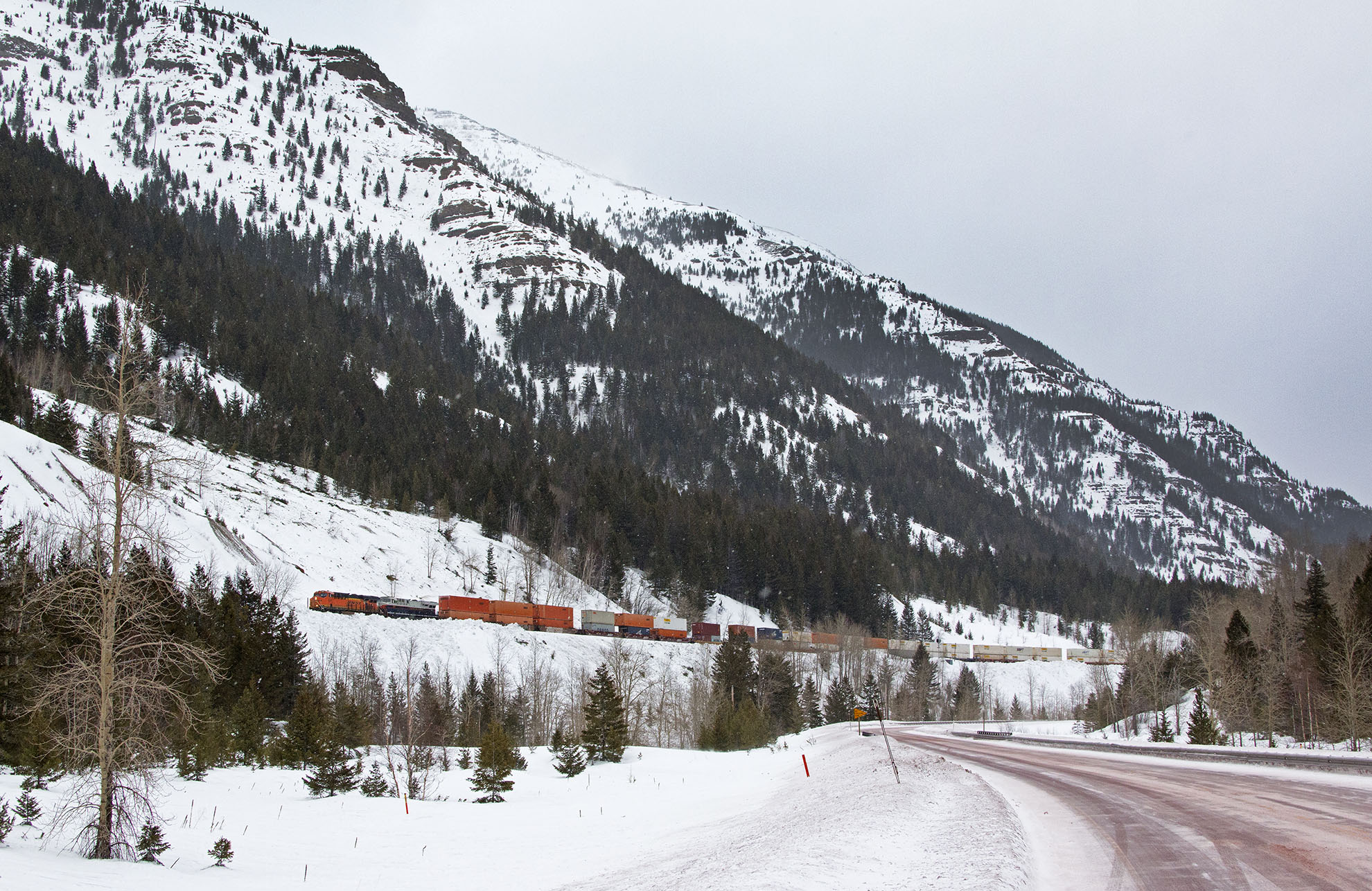MARIAS PASS, Mont. — BNSF Railway’s operations across northern Montana and the Pacific Northwest are slowly getting back to normal after being shuttered twice in the last week due to a series of avalanches on the southern edge of Glacier National Park.
The railroad closed its Hi Line Subdivision over Marias Pass from Feb. 5 to 7 and again Feb. 9 and 10, after the region was pummeled by a massive winter storm that brought upwards of 52 inches of snow to the area. While the line was blocked by multiple slides, BNSF parked certain trains and re-routed others over Montana Rail Link. Meanwhile, Amtrak passengers aboard the Empire Builder were left waiting for the line to reopen in Whitefish and Shelby, Mont.
Less than 48 hours after BNSF crews reopened the line the first time, another slide came down the side of John F. Stevens Canyon on Thursday morning just east of Java. The slide was reported to be more than 500 feet wide and 20 feet deep.
BNSF spokesperson Ross Lane tells Trains News Wire that due to intense winter weather and dangerous avalanche conditions, crews were unable to get into the site until early Friday morning. The avalanche also closed nearby U.S. Highway 2. When they finally were able to gain access to the site, they used bulldozers and Jordan Spreaders to clear the double-track main line. The line was reopened late Friday afternoon.
Over the weekend, BNSF’s Northern Transcon was still congested, with low-priority trains parked waiting for crews and high-priority intermodals and Amtrak threading their way across the system. Despite major delays in the previous days, Amtrak was only running an hour or two behind schedule on Saturday and Sunday.
Although slide conditions have apparently stabilized, the Flathead Avalanche Center says there is still considerable chance for avalanches above 6,000 feet on the southern edge of Glacier National Park.
BNSF and its predecessors have long struggled with avalanches on the southern edge of Glacier Park. Dozens of railroaders died in the late 1800s and early 1900s there because of slides. In 2004, an avalanche struck a grain train, derailing 15 cars. The following winter, BNSF established an avalanche safety program and hired a forecaster to help the railroad prepare for slides. The last time the railroad was shut down due to slides was in 2014. Because the railroad travels along the southern edge of a national park, it is unable to regularly use mitigation techniques. However, in rare instances when human life is at risk, the park will issue a special use permit for the railroad to trigger slides to stabilize conditions.















yikes be safe from sunny clear san diego
great use of drones.